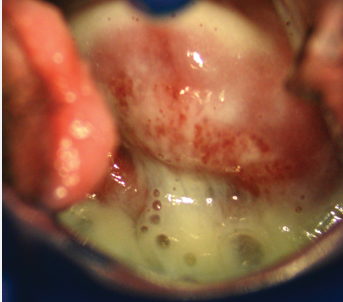Trichomoniasis is one of the STDs that presents with discharge that can be mistaken with others. A parasite belonging to a group protozoa called trichomonas Vaginalis is responsible for causing trichomoniasis infection. Trichomoniasis discharge looks frothy, greenish and light texture. You get this disease if you sleep (sex) with an infected person without using protection.
To single out the diagnosis of this infection a laboratory test is done through collecting a vaginal or urethral discharge (sample) for microscopic examination to see the pathogen responsible of causing Trichomoniasis discharge. The first symptom of this disease is a discharge and itching genitals. you can't go unnoticed if your get this infection because of its itchy causing character.
What causes trichomoniasis discharge?
Trichomonas vaginalis is a type of small parasite that is a one-celled protozoan that causes trichomoniasis. Through vaginal, oral, or anal sex—all forms of genital contact—the parasite is transferred from person to person. Men, women, and occasionally even men can contract the illness from one another.
The lower genital tract is infected by the parasite. The urethra, vagina, uterine hole (cervix), and outside portion of the genitalia (vulva) all belong to women. The parasite affects men by infecting the urethra, or interior of the penis.
It is uncertain how long the incubation period is between becoming infected and being exposed to the parasite. However, estimates vary from four to 28 days. You and your partner can continue to transfer the infection even in the absence of symptoms.
What are symptoms of Trichomoniasis?
The common symptom or sign of Trichomoniasis is a discharge and itchiness inside the urethra or vagina. However not all patients who got the diseases show symptoms. Here are the signs and symptoms of trichomoniasis:
- Discharge from penis or vagina in women
- Pain when passing urine or when having sex.
- Itchy genitals. your keep scratching your private parts and you can't hold it.
- Burning sensation inside penis or vagina
- Reddish appearance of the vagina and the urethral meatus (opening)
- Lower abdominal pains in females.

Once you notice the above symptoms it is more likely you have trichomoniasis, though the trichomoniasis discharge may mimic other discharge causing sexually transmitted diseases.
How do trichomoniasis discharge look like?
The trichomoniasis discharge may come as clear, greenish, brown or yellow. The smell is so unpleasant and smells like fish. In most cases the discharge is lighter in texture.
Diagnosis.
To diagnose this STD there are laboratory test important to detect or see the parasite that cause trichomoniasis.
Clinicians use symptoms and signs with a sexual history to know if you have trichomoniasis or not, that is called clinical diagnosis.
The lab tests used are as follows:
Microscopic examination. A high vaginal or urethral swab is done carefully to collect the fluid from the vagina and urethra and then examined under the microscope. A lab scientist is able to see the parasite when you have trichomoniasis.
Rapid antigen test. Urine can be used to check the presence of trichomonas vaginalis within minutes. Urine sample is dropped into a gadget and later the results will show.

What's the treatment
Treating trichomoniasis has the same approach like what's is done with other STDs. All sexual partners of the index needs treatment to avoid reinfection. Offering treatment to just one person is total pointless because they will get it from the source again.
A drug called metronidazole commonly (flagyl) is an effective treatment of trichomoniasis. Alternatively the following drugs are also used for treatment:
- Secnidazole
- Tinidazole
Treatment can be given in two options namely using high dose or normal multiple doses
High dose: A patient takes 2g once per oral of metronidazole or the other drugs above accordingly.
Normal multiple doses: Metronidazole 500mg twice a day for 5 days. Even other medications can be given in the same manner with different dosage.
How to avoid getting trichomoniasis.
To avoid getting this disease you are encouraged to do the following:
- Use condoms each time you are having sex
- Avoid sex if you can.
- Get treatment together with your partners to prevent re-infection.
What are Complications of trichomoniasis
- Give birth too soon, or prematurely
- Giving birth to a low birthweight baby
- As the infant goes through the birth canal, transmit the infection to it.
- The discomfort that trichomoniasis generates in the vaginal area may facilitate the entry of additional STIs into the body or their transmission to others.
- Additionally, trichomoniasis seems to facilitate the acquisition of human immunodeficiency virus (HIV), the virus responsible for acquired immunodeficiency syndrome (AIDS).

